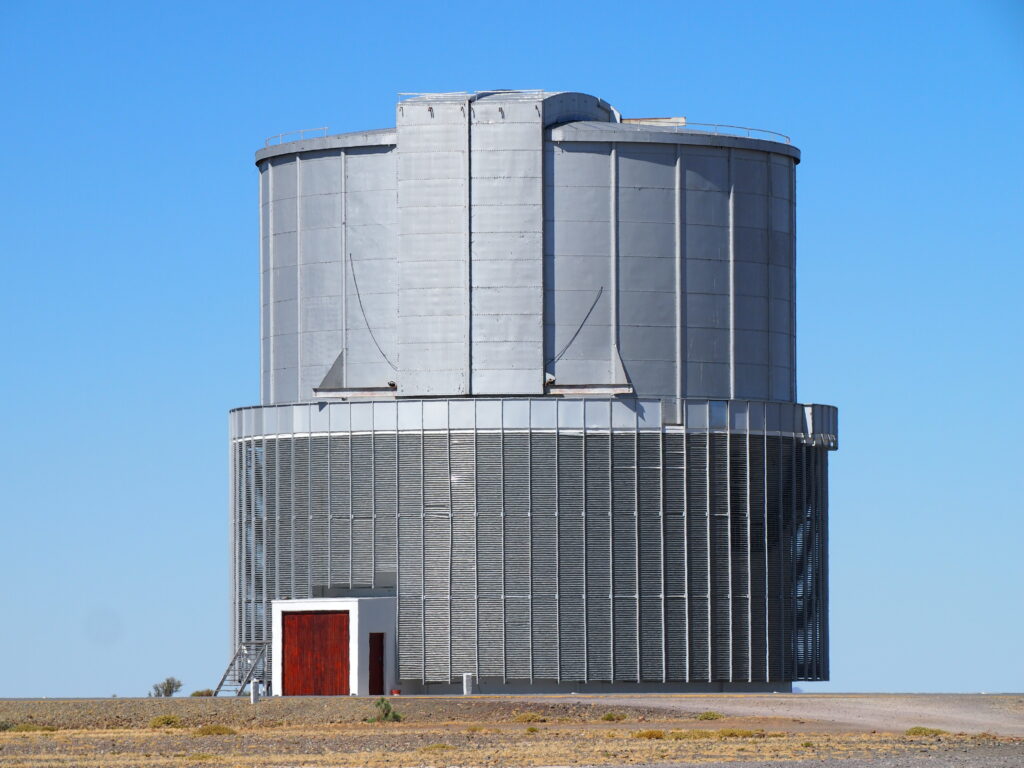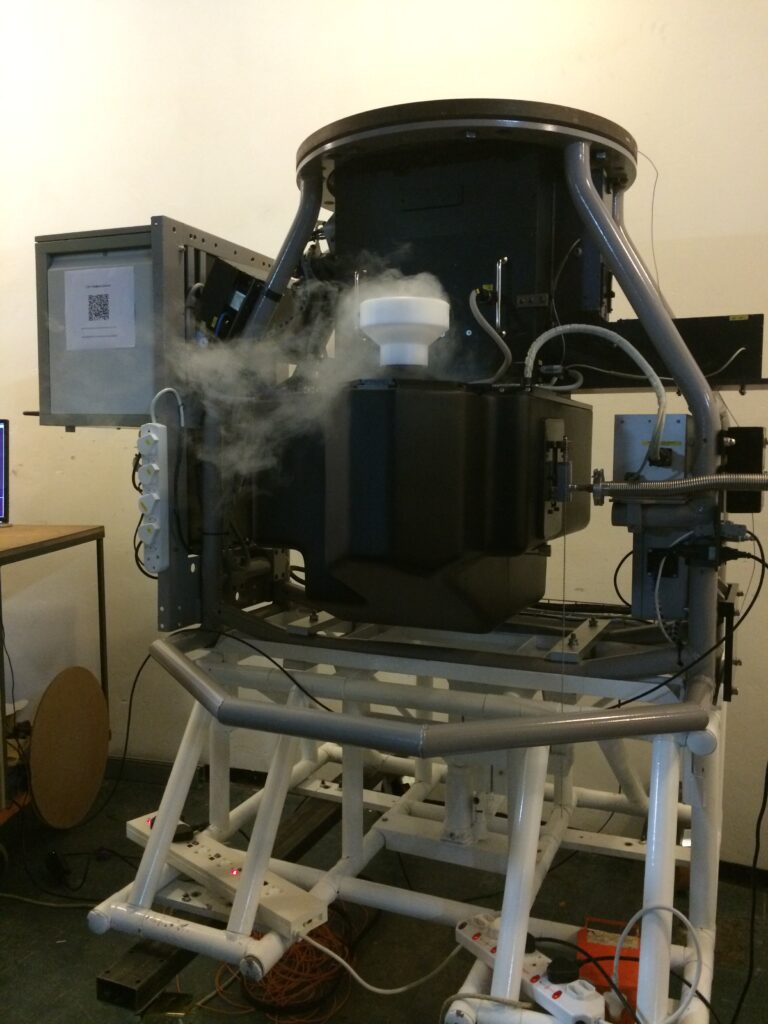The 1.9m telescope was managed by the UK Science Research Council on a lease agreement with the Radcliffe Trustees to provide UK astronomers with better access to a large telescope in the Southern Hemisphere while waiting for the Anglo-Australian telescope to be completed. Since 1951, the Royal Observatory Cape of Good Hope had enjoyed the use of the Radcliffe telescope – when the Radcliffe Observatory closed, it made sense for the Council of Scientific and Industrial Research to buy the telescope from the Trustees. This decision was influenced by the need to make the Sutherland site competitive with a variety of telescope sizes, and to be on track with the trends from other Observatories, like Chile and Australia. The absence of significantly sized telescopes posed a concern for possible loss of interest locally and internationally, hence the 1.9m telescope proved a valuable addition to the telescopes in Sutherland.
Once purchased, it was delivered to Sutherland on 1 April 1974 and then commissioned on 31 August 1976. A symposium was held from 15-17 March to celebrate its re-commissioning. Astronomers Glass and Walker together with the engineering staff invested a considerable amount of time designing and developing a computer encoder system as well as software to allow automatic control of the infrared photometer, dome control, declination offsetting and raster scanning for the telescope. Infrared observations proved useful in studying dust in the regions of star formation.

The close ties between the Royal Greenwich and Radcliffe Observatories steered them towards an introduction of a range of programmes such as photometric and spectroscopic studies of the southern RR Lyrae stars at the SAAO. These are variable stars that can be used as standard candles because knowing the period and apparent brightness makes it possible for astronomers to calculate the distances of relatively close stars. This information helps with dynamic models of galaxies or globular clusters, which is where RR Lyrae are usually found. The Royal Observatory astronomers had been using the 1.9m to observe radial velocities of fairly near stars with distances and accurate motions that had already been resolved at the Cape. The Cape Observatory produced true motions in space, which yielded an understanding of orbits within the Milky Way.
Some Mira variables in the Large Magellanic Cloud were found using this telescope. More work using the same telescope demonstrated that these variables’ period and luminosity were closely linked. Much of the SAAO research was geared towards improving our understanding of the distances between galaxies, which was an important step in determining the age of the Universe. With the aim of determining infrared and bolometric accurate magnitudes for stars as well as variability monitoring, the JHKL (are from the near infrared) photometry of different red giants and supergiants were obtained. An observation of Mira variables spanning 200-days in the Large Magellanic Clouds, previously discovered optically, were detected in the infrared at anticipated magnitudes.

With all the wonderful work done with the telescope after its recommissioning in Sutherland, around 2015, a team of astronomers and engineers worked together to upgrade the Cassegrain Spectrograph. For many years, the spectrograph had incremental upgrades, with an overhaul and holistic upgrade taken over by bigger projects like the building of the Southern African Large Telescope (SALT) as well as new instruments. The upgrade did not mean the telescope was incapable of doing its work; rather, it needed to keep up with the latest technology to be efficient. The team’s original plan was to replace the camera optics and the charged-coupled device (CCD), along the way the project included other aspects like the collimator unit and other parts.
